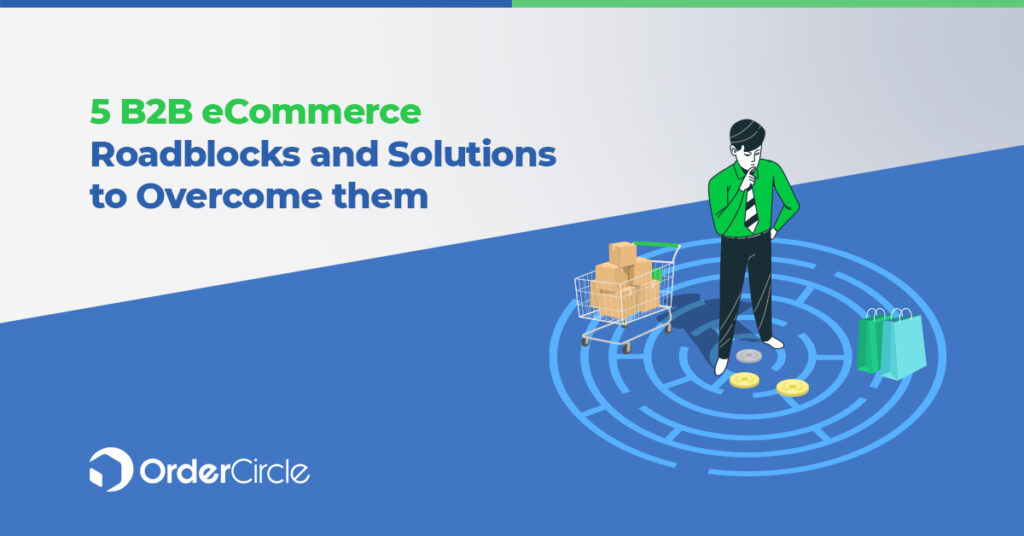The e-commerce market has experienced exponential growth, and by 2023, it is anticipated that total e-commerce revenues will amount to $1.065 trillion. Compared to owners of brick-and-mortar stores, you face particular difficulties as an e-commerce company owner. These difficulties may range from cybersecurity concerns to large-scale operational inefficiencies.
Let’s discuss the five most common roadblocks B2B eCommerce owners face and the best ways to overcome them.
#1 Ensuring cybersecurity
Customers frequently need to provide more personal information when making purchases online, including their email address, residential location, phone number, and other information about themselves like their occupation, age, and preferred language. Frequently, the merchandise is not received for days or even weeks after the receipt is sent via email.
You have a lot of obligation in maintaining so much sensitive financial and personal data about your clients. Your eCommerce store can become an accessible target for cyberattacks as a result. In addition to attacking the website and sales platform, viruses can hack into systems and reveal client data.
Solution: To avoid security breaches, it is imperative that online businesses invest in a strong cybersecurity system. Additionally:
- Make a digital backup. Cyberattacks frequently result in data loss, which can cause businesses to lose clients or even go insolvent. Using an automatic system updater is the most effective method to back up data.
- Never keep credit card details in your database. It is a risk and turns you into a hacker target. To handle payments off-site, think about utilizing a third-party application like Wordplay, Stripe, or PayPal.
#2 Managing returns
Returns can cost your business. There has been a rise in the millennial shopping trend whereby they purchase multiple items with the intention to keep only a single item and return the rest. Now that Amazon has popularized free returns, customers have started taking returns for granted. Such policies may add convenience for the buyers but can prove catastrophic for the sellers.
Solution: You must have a reliable return management system if you run an e-commerce company in order to handle such situations. These are some tactics you can employ:
- Blacklist customers misusing the return policy.
- Add images from various angles or introduce short videos to familiarize the customer with the product, enabling them to make accurate buying decisions.
- Address common queries by customers by creating an FAQs section on the product page.
- Additionally, you can use data to identify patterns in client returns. You can cut back on the amount of marketing money you spend on consumers who frequently return your goods if there is a certain group of them.
#3 Stock Management
The term “Ghost Economy” refers to losses brought on by overstocking or out-of-stock situations. It is estimated that the ghost economy costs merchants $1.75 trillion annually. In addition to losses, they harm customers’ perceptions and lower the total customer lifetime worth.
Solution: You should keep up with consumer preferences as patterns change. This is where using your sales statistics can be beneficial. You can prioritize and double down on the goods that are selling well based on your sales data.
- Most importantly, it is essential that you invest in an all-round stock management system that can streamline operations across the enterprise’s logistics and inventory. Such solutions cut down costs while ensuring the fulfillment of business goals.
- Inventory management solutions like OrderCircle also provide real-time notifications for low stocks, ensure central stock management for multiple channels and streamline stocks before it’s too late.
#4 Keeping up with the competition
Enterprises face numerous types of competition, particularly in the e-commerce industry. You must stay on top of the aggressive selling, of goods, and services that are all vying for your target client. It can get difficult to differentiate your company from other online retailers because the e-commerce market has become saturated.
Solution: To stand out and draw in new clients for your company, you must set yourself apart from competitors. You can achieve this by making sure your website is optimized properly for the current Google algorithm and has a professional appearance. In addition:
- Create customized touchpoints on your website, including a unique URL for managing your orders.
- Offer services to more than one region with multilanguage selling options in multiple currencies.
- Use integrations and convenient payment methods to ensure fewer drop-offs at the final lap of the purchase process.
#5 Lacking customer support
Your clients have a wide range of options now because of globalization and digitization. Due to all of this, it becomes difficult to attract new clients; therefore, relying on repeat business from current clients seems to be a workable long-term option.
A satisfied customer will encourage repeat business and good word-of-mouth advertising to bring in new clients. You must delight your customers in order to obtain this favor, not only through promotional offers but also through first-rate customer care.
Solution: Contacting your customer support department by phone or text should not be difficult. Considering that ineffective communication can worsen the customer’s annoyance, you should also engage in the training of your customer success executives.
AI-powered chatbots are a contemporary way to provide customers with round-the-clock support, and you can add preemptive answers to the queries they ask you the most. Your customer success team can focus on their tasks thanks to time savings provided by your chatbots.
Got all the solutions you were looking for? Get all the gear of your B2B eCommerce business running with an ultra-efficient order management and streamlining tool like OrderCircle. Get to know all that lies in the store by booking an absolutely free demo. Click here to book now.

